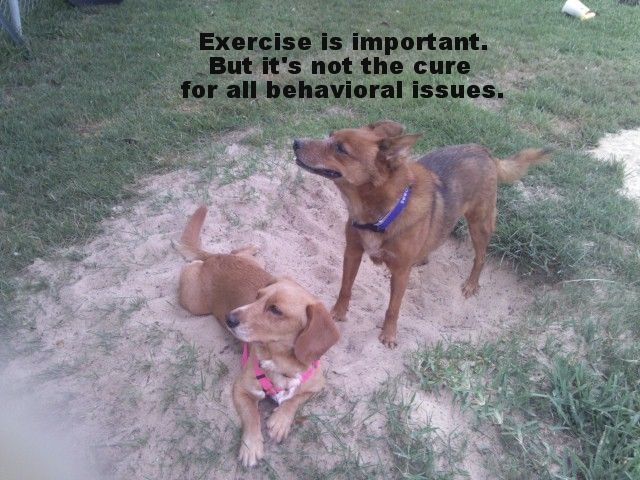I used to be a volunteer at a crowded shelter that didn't have enough volunteers to keep the dogs exercised and stimulated. All the dogs needed more attention, but I was very concerned about the dogs that had a reputation for biting. I felt like they needed to get out of their kennels more than the others. So I took it upon myself to work up my nerve and take them out.
Tossing a slip leash over their heads and taking them for a walk wasn't very difficult. The danger was usually in taking them back. I had to reach towards their faces to remove the slip leash - which put me in danger of receiving a bite on the hand.
So once I had these dogs out on leash, we'd walk...and walk.. and walk.. until both of us were quite tired. My thought process was that by the time we'd get back to their kennel, they'd be too tired to bite me (plus it gave me some time to work up my nerve to attempt to remove the slip leash).
I don't know if my strategy made any sense or if it actually worked. But I can say that I never received a bite from a dog after I had walked him/her for 75 minutes. Maybe they weren't going to bite me anyway, I don't know. I did get bitten a couple of times during my 8 year stint as a volunteer but none of the incidents happened after a long walk.
But even if my strategy did work, all it did was provide me with a short window of safety. I was doing nothing to address the biting issue. A 75 minute walk was usually enough to get a dog tired, but if I had continued that, the dogs would have eventually got conditioned. Then they would have needed a 90 minute walk, then a 2 hour walk and so on. And what happens if the human can't walk for 2 hours, or if it's to hot to walk that far, of if the dog has an injury that prevents long walks? Then we'd just have a biting dog who was in really great shape.
Of course those dogs needed exercise and they needed to get out of their noisy, crowded kennels, but we should have also worked on the biting issue:
- For the safety of volunteers and staff
- For the dogs' mental well-being
- To help them find a great home (and get out of the stressful shelter)
In addition to moderate exercise, we should have employed stress reduction, mental stimulation, enrichment, and counter conditioning and desensitization.
The same philosophy applies to pet dogs who are lucky enough to live in homes instead of a shelter. If a dog jumps all over company, we could take our dog on a 2 hour walk before company comes so he'll be too tired to jump, or we could teach the dog how to be calm when company arrives.
If our dog always gets into the trash whenever we leave for work, we could take her for a 5 mile jog before work or we could put the trash out of reach or empty the trash before we leave for work.
If our dog chews on the windowsill while we are gone, we could play fetch for 3 hours before leaving or we could use separation anxiety protocols to help our dog feel more comfortable about being left alone.
Additional reading:
Stress Reduction
Whole Dog
Jumping Up
Separation Anxiety
Reward Calm
See more on exercise here
Tell us your thoughts in the comments section below
Email general questions or comments to education@stubbypuddin.com
Replies might be shared on this blog but names will be changed or left out.
To get notified of future posts, click here

Thanks for the excellent post.
ReplyDeleteI have a Jack Russell who is a therapy dog - we visit people and he makes them happy. I worry that if he doesn't get any exercise before a visit, he will be too wound up; and if he gets too much exercise, he will be stressed since he would normally be sleeping/resting but now has to be awake and alert. Do I just need to find the right amount of exercise before hand to give him or is there some magic formula? Other variables might include time of day, last meal, distance in the car to the facility, etc...
Thanks again
Thanks for the compliment @I Love. and thanks for participating in pet therapy.
DeleteHave you tried taking your pup on therapy visits without exercise to see what happens?
Maybe a dry run - where you go to visit friends or something to see how he does.
Or maybe some hard exercise then an hour of rest, then on to the therapy visits?
Or maybe a training session instead of a physical exercise session?
Or maybe a relaxation session instead of an exercise session.
Could be informal - just some calm petting or message
Or more formal - TTouch, or The Relaxation Protocol
http://blog.mysanantonio.com/latrenda/2013/03/the-relaxation-protocol/
Stay tuned. We will be talking about exercise in future posts.
These are great suggestions - thank you.
ReplyDelete